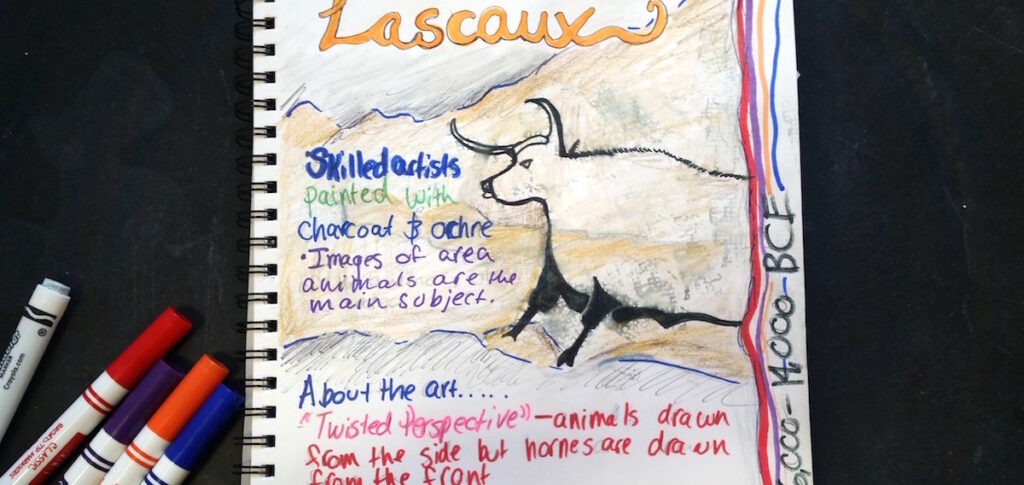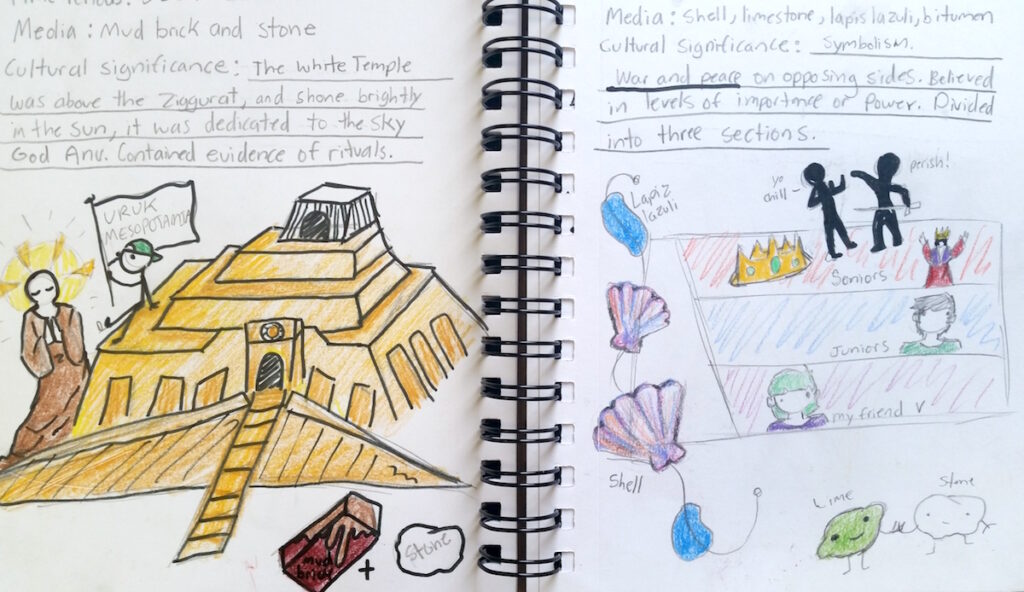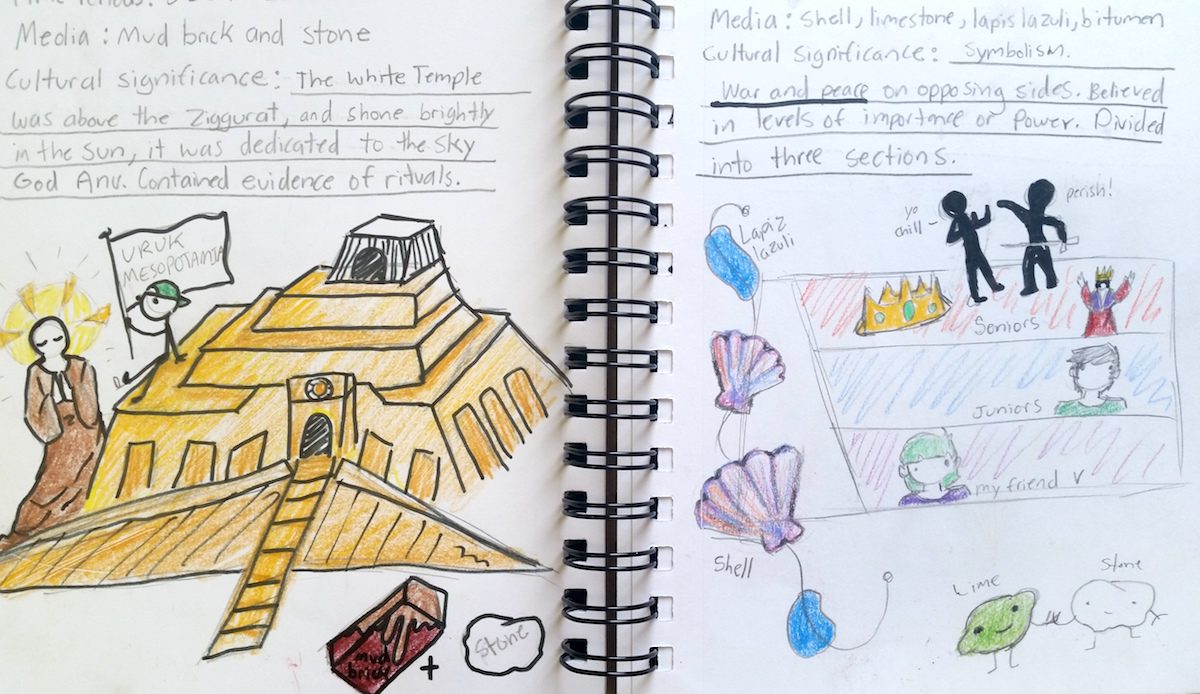Learning about art history is an important part of art education. Sometimes, however, it feels like there aren’t enough minutes in the school year to cover a broad range of historical artworks. Most of us stick to the few artists on which we base projects.
If you are interested in expanding the amount of art history you cover without giving up lots of class time, then you may want to think about incorporating art history visual journals.
What are Visual Journals?
Visual journals are places to record thinking in both writing and images. They are often done using mixed media combining writing, drawing, painting, and even collage. Historically, great thinkers such as Leonardo da Vinci and Charles Darwin kept notebooks similar to visual journals. Today, many artists keep visual journals as part of their planning process, but they also work extremely well as an art class version of note taking.

Using Visual Journals for Art History
Visual journaling is perfect for teaching art history because images of the artwork being studied can be combined with supporting text to record both facts and personal responses. Drawing to take notes is much more engaging than listening to a lecture. Plus, pages can be completed in a relatively short amount of time, or even by early finishers.
To include art history visual journals in your classroom, start by gathering the following supplies:
- A container – an old book, a spiral notebook, sketchbook or even loose paper for each student
- Drawing media – pencils, pens, markers, or colored pencils
- Collage materials – images of the artwork being studied, scissors, glue, and something to seal the images like gel medium or Mod Podge
- Layering materials – acrylic paint or stamps
- Examples – show students what visual journaling can look like

Using Visual Journals with Your Students
To introduce the concept of visual journaling, share examples with students and give a quick demonstration about how to combine images with text. If you decide to use an old book as a journal, instruct students to cover pages with a layer of paint to create an open area for journaling. To use the journals in class, ask students to record information, observations, and opinions in their journals. Encourage them to draw symbols that illustrate concepts. For example, an image of praying hands could symbolize the importance of religion in Van Gogh’s life, or a French flag could show the location of the Lascaux caves.
Visual journaling is flexible and can be incorporated into your program in multiple ways. One method is incorporating art history weekly or even monthly at the start of class. Journal entries can be created for each work or artist discussed, then added to over the course of the year. They will become a record of learning to reference for inspiration or when something related is introduced. Another option is to have students make journal entries about artists discussed in the course of other lessons or projects. This can work the same way by having kids make a quick entry they add to over time.
In my own classroom, I use visual journaling in the art history course I teach in place of notes. I require students to record an image of the work, information about when and where it was made and the cultural significance. However you use it, visual journaling is a great method for studying art history.
Do you use visual journaling in your classroom?
What other methods do you use to help students retain art history knowledge?
Magazine articles and podcasts are opinions of professional education contributors and do not necessarily represent the position of the Art of Education University (AOEU) or its academic offerings. Contributors use terms in the way they are most often talked about in the scope of their educational experiences.





